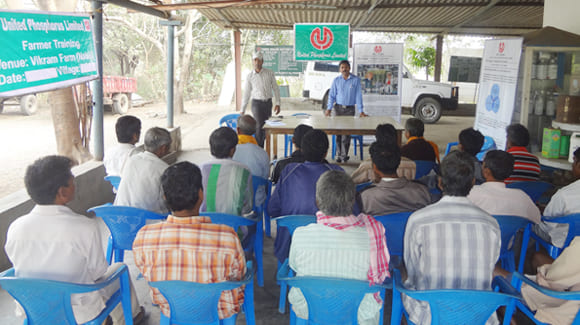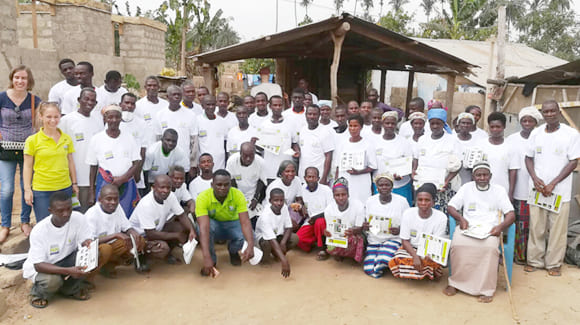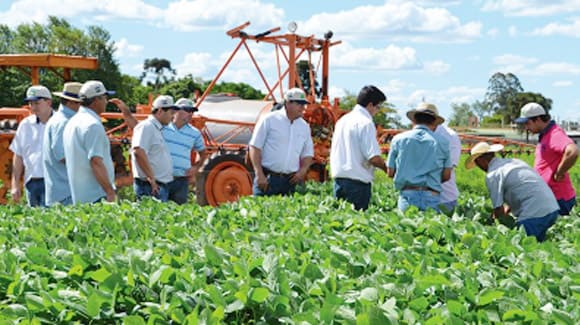Farmer's Education and Training Program
In the past few decades, many new developments have taken place in agriculture farming, mainly driven by fast-moving innovations in science and technology that impact agricultural operations. To enable the farmers of our country to keep up with the latest agricultural innovations across the world, they must be provided with effective farmer education and farmers training programs where they are introduced to new technology in agriculture and can learn new farming techniques.
Smart Farming & Smart Farming Techniques
To empower our farmers and enable them to stay abreast of the new developments in agriculture technology and innovative farming techniques, UPL Limited has implemented various initiatives to ensure that they have easy access to farm inventions and new technology in farming. Smart farming is a new concept that refers to the application of modern Information and Communication Technologies (ICT) to agriculture. Smart farming includes concepts like digital farming, robotic farming, and automated farming. Given the challenges faced by farmers owing to climate change, it has become necessary to adopt a Climate-Smart Agriculture (CSA) approach as well.
Many aspects of farming are labour-intensive and require performing repetitive and standardized tasks. Agricultural robots are already being used in many farms to perform tasks like planting, watering, and harvesting. The widespread use of robots in farms will make it possible to produce more and better quality agricultural products in the future.
While it has been long since seeding equipment replaced the laborious process of manual seeding, seeding machines come with their own challenges. Precision seeding equipment is designed with smart technology and combines geomapping and sensor data detailing to maximize the chances of seeds having the best chance to grow.
Irrigation is another area where smart farming techniques are being utilized. Subsurface Drip Irrigation (SDI) is a technology that is already in use in many farms. Smart irrigation technology includes sensors installed on water channels that activate the flow of water into the ditches as per the soil conditions and requirements.
Traditionally, it has been a difficult task for farmers to keep an eye on the fields. With advancements in farming technology, agricultural drones that provide farmers a bird's-eye view of the field from the sky have been introduced. Airborne sensors collect visual and thermal data and the drones that are equipped with cameras produce aerial photographs that help in mapping and monitoring the field conditions.
Technological developments have paved the way for smart greenhouses with solar-powered sensors that enable farmers to monitor greenhouse conditions like water use, light, humidity, and temperature. Farmers can remotely activate a fan, turn on the lights, regulate the temperature, or control the humidity level without having to be present in the greenhouse.
From preparing the field for sowing to harvesting, a wide range of traditional agricultural practices have been upgraded with the introduction of smart farming agriculture technology. Technological innovations in the areas of weeding, crop maintenance, and harvesting are helping to increase the quantity and quality of the crops produced per hectare. A few prototypes of robots have already been developed that are capable of doing delicate harvest work like picking fruits from vines and trees.
Introducing New Technology in Agriculture and Agricultural Products
For the further development of the agriculture sector, it is important to introduce and implement new agriculture technology on a large scale. For this to happen, farmer engagement and training programs are very crucial.
A lot of the Indian population is dependent on agriculture for livelihood, and a majority of Indian farmers are marginalized smallholders. For the introduction of new technology in agriculture to be successful nation-wide, special attention needs to be given to the small farmers as they face both internal and external challenges as far as the adoption of new agricultural technology is concerned. Provisions for advisory services and farmer support should be made.
Social, economic, and institutional factors determine how fast agricultural technologies are adopted. The education level, age, land size, availability of modern communication devices, and costs and benefits of adopting technology are some of the factors that determine the probability of a farmer adopting new agriculture technology.









